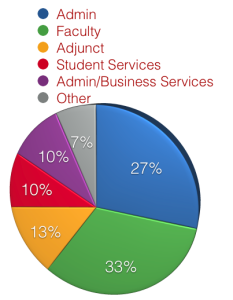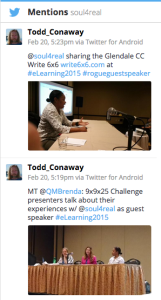Last week, during our weekly department meeting, I proposed this to my staff: What if your ability to keep your job was contingent on the success of your client? What if you didn’t get paid until your clients were happy and successful? What if every employee was responsible for their own salary?
Do you know how many students you would need to guarantee are successful each year? Just for illustration purposes, multiply your salary by 37% (that’s about how much of your paycheck comes from tuition). Now divide that number by $71 (that’s how much GCC gets from the District per credit hour); now take that number and divide it by 24 (that’s 12 credit hours per semester). That equals the approximate number of full time students you need to make sure are successful this year to equal your paycheck.
The point of that exercise is to ask this: If your job depended on those students staying at GCC, paying tuition and re-enrolling for another year, would you be more proactive in their personal academic success? Would you march them over to the Enrollment Center and personally see to it that they are enrolled and paid their tuition? Would you shepherd them through the process of financial aid? Would you ask how their grades are, escort them to tutoring, make sure they studied hard? Would you ask how else you can help them be successful?
While we have a duty to educate and raise up our students to be independent, contributing members of society, they are still, after all, our client. Meaning, they can take their tuition dollars elsewhere. They are paying for a service (an education) just like any number of us do at other establishments. And the first rule of customer service is to picture them with dollar signs on their forehead.
Marketing people are familiar with the old adage: If someone has a good experience, they might tell three people. If someone has a bad experience they will tell 11. Now, this was before social media! So go ahead and add a couple zeros behind those numbers to account for a mass online audience. This effects a student’s motivation to enroll a great deal.
Word-of-mouth is a powerful tool. In fact, more than 37% of our students are here because of a friend or family member! Another 10% are here because of a relationship they formed with a recruiter. Another batch are here because our online community through social media. A successful, cared for, student is a happy student who is willing to tell others about GCC.
In all reality, that’s your paycheck walking around out there on campus. How many students are you responsible for? Would you serve a student as if your job depended on it?


